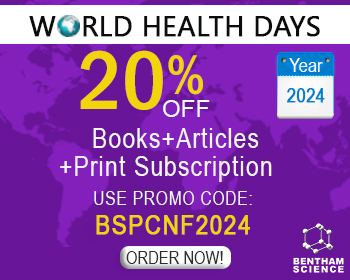Abstract
Targeted therapy has been recently highlighted due to the reduction of side effects and improvement in overall efficacy and survival from different types of cancers. Considering the approval of many monoclonal antibodies in the last twenty years, cancer treatment can be accomplished by the combination of monoclonal antibodies and small molecule chemotherapeutics. Thus, strategies to combine both drugs in a single administration system are relevant in the clinic. In this context, two strategies are possible and will be further discussed in this review: antibody-drug conjugates (ADCs) and antibody-functionalized nanoparticles. First, it is important to better understand the possible molecular targets for cancer therapy, addressing different antigens that can selectively bind to antibodies. After selecting the best target, ADCs can be prepared by attaching a cytotoxic drug to an antibody able to target a cancer cell antigen. Briefly, an ADC will be formed by a monoclonal antibody (MAb), a cytotoxic molecule (cytotoxin) and a chemical linker. Usually, surface-exposed lysine or the thiol group of cysteine residues are used as anchor sites for linker-drug molecules. Another strategy that should be considered is antibody-functionalized nanoparticles. Basically, liposomes, polymeric and inorganic nanoparticles can be attached to specific antibodies for targeted therapy. Different conjugation strategies can be used, but nanoparticles coupling between maleimide and thiolated antibodies or activation with the addition of ethyl-3-(3-dimethyl aminopropyl) carbodiimide (EDC)/ N-hydroxysuccinimide (NHS) (1:5) and further addition of the antibody are some of the most used strategies. Herein, molecular targets and conjugation strategies will be presented and discussed to better understand the in vitro and in vivo applications presented. Also, the clinical development of ADCs and antibody-conjugated nanoparticles are addressed in the clinical development section. Finally, due to the innovation related to the targeted therapy, it is convenient to analyze the impact on patenting and technology. Information related to the temporal evolution of the number of patents, distribution of patent holders and also the number of patents related to cancer types are presented and discussed. Thus, our aim is to provide an overview of the recent developments in immunoconjugates for cancer targeting and highlight the most important aspects for clinical relevance and innovation.
Keywords: Antibody, drug targeting, cancer, immunoconjugate, nanoparticle, monoclonal antibody.
[http://dx.doi.org/10.1016/j.jddst.2018.08.022]
[http://dx.doi.org/10.1016/j.mpmed.2015.10.012]]
[http://dx.doi.org/10.1016/j.biopha.2018.06.066] [PMID: 29945114]
[http://dx.doi.org/10.1016/j.imlet.2017.07.015] [PMID: 28760499]
[http://dx.doi.org/10.1016/j.resinv.2018.09.001] [PMID: 30293943]
[http://dx.doi.org/10.1016/j.jconrel.2017.10.036] [PMID: 29107128]
[http://dx.doi.org/10.1016/j.coph.2018.05.010] [PMID: 29883853]
[http://dx.doi.org/10.1016/j.colsurfb.2017.07.085] [PMID: 28837895]
[http://dx.doi.org/10.1016/j.drudis.2017.05.011] [PMID: 28627385]
[http://dx.doi.org/10.1016/j.hoc.2018.07.014] [PMID: 30390760]
[http://dx.doi.org/10.1042/BSR20150089] [PMID: 26182432]
[http://dx.doi.org/10.1016/S0168-3659(99)00248-5] [PMID: 10699287]
[http://dx.doi.org/10.1016/j.addr.2006.09.009] [PMID: 17092599]
[http://dx.doi.org/10.2174/1389201015666141020155834] [PMID: 25335532]
[http://dx.doi.org/10.1016/j.canlet.2016.03.002] [PMID: 26968248]
[http://dx.doi.org/10.1016/j.ejphar.2018.07.034] [PMID: 30031797]
[http://dx.doi.org/10.1016/j.flm.2017.06.001]
[http://dx.doi.org/10.1016/j.tcb.2015.12.006] [PMID: 26827089]
[http://dx.doi.org/10.1038/nrclinonc.2010.97] [PMID: 20551942]
[http://dx.doi.org/10.1016/j.ctrv.2017.06.005] [PMID: 28715775]
[http://dx.doi.org/10.1016/j.ctrv.2018.05.004] [PMID: 29772459]
[http://dx.doi.org/10.1016/j.phrs.2018.08.023] [PMID: 30170190]
[http://dx.doi.org/10.1016/j.pharmthera.2016.06.001] [PMID: 27288725]
[http://dx.doi.org/10.1016/j.clml.2016.06.002] [PMID: 27450971]
[http://dx.doi.org/10.1016/j.mam.2017.11.007] [PMID: 29137923]
[http://dx.doi.org/10.2174/157436211795659955] [PMID: 25197268]
[http://dx.doi.org/10.1016/j.molcel.2015.05.007] [PMID: 26091342]
[http://dx.doi.org/10.1016/j.ctrv.2018.12.002] [PMID: 30543930]
[http://dx.doi.org/10.1016/j.jconrel.2014.05.035] [PMID: 24878184]
[http://dx.doi.org/10.1016/j.ctrv.2019.03.002] [PMID: 30913454]
[http://dx.doi.org/10.7150/thno.13348] [PMID: 26681984]
[http://dx.doi.org/10.1021/ar700108g] [PMID: 17705444]
[http://dx.doi.org/10.1016/j.biologicals.2015.05.006] [PMID: 26115630]
[http://dx.doi.org/10.1038/nrd.2016.268] [PMID: 28303026]
[http://dx.doi.org/10.1016/j.biotechadv.2015.05.001] [PMID: 25981886]
[http://dx.doi.org/10.1016/j.bmcl.2014.10.021] [PMID: 25455482]
[http://dx.doi.org/10.1016/j.drup.2014.11.001] [PMID: 25476546]
[http://dx.doi.org/10.1158/1078-0432.CCR-11-1417] [PMID: 22003066]
[http://dx.doi.org/10.1124/jpet.109.155549] [PMID: 19498104]
[http://dx.doi.org/10.1158/1078-0432.CCR-10-0987] [PMID: 20805300]
[http://dx.doi.org/10.1016/j.pharmthera.2016.07.012] [PMID: 27492898]
[http://dx.doi.org/10.1021/bc7004329] [PMID: 18314937]
[http://dx.doi.org/10.1007/978-1-62703-541-5_5]] [PMID: 23913142]
[http://dx.doi.org/10.1038/nbt.3212] [PMID: 26076429]
[http://dx.doi.org/10.1100/tsw.2010.191] [PMID: 20953556]
[http://dx.doi.org/10.1158/0008-5472.CAN-05-4489] [PMID: 16618769]
[http://dx.doi.org/10.1007/s13238-016-0323-0] [PMID: 27743348]
[http://dx.doi.org/10.1016/j.pharmthera.2017.07.013] [PMID: 28757155]
[http://dx.doi.org/10.4161/mabs.27022] [PMID: 24423619]
[http://dx.doi.org/10.3390/biomedicines5040064] [PMID: 29120405]
[http://dx.doi.org/10.1038/nbt.1480] [PMID: 18641636]
[http://dx.doi.org/10.1021/bc400217g] [PMID: 23808985]
[http://dx.doi.org/10.1073/pnas.1321237111] [PMID: 24443552]
[http://dx.doi.org/10.1021/bc5004982] [PMID: 25494884]
[http://dx.doi.org/10.1021/bc400490z] [PMID: 24437342]
[http://dx.doi.org/10.3390/ijms18112284] [PMID: 29088062]
[http://dx.doi.org/10.1074/jbc.M111183200] [PMID: 11916963]
[http://dx.doi.org/10.1016/j.tibs.2004.11.005] [PMID: 15653326]
[http://dx.doi.org/10.1021/bc900103p] [PMID: 19425533]
[http://dx.doi.org/10.1021/bc400574z] [PMID: 24483299]
[http://dx.doi.org/10.1039/C7OB01027C] [PMID: 28649690]
[http://dx.doi.org/10.3390/ijms17040561] [PMID: 27089329]
[http://dx.doi.org/10.1021/acs.bioconjchem.7b00062] [PMID: 28388844]
[http://dx.doi.org/10.3390/ph11020032] [PMID: 29642542]
[http://dx.doi.org/10.4161/mabs.3.2.14960] [PMID: 21441786]
[http://dx.doi.org/10.5582/ddt.2016.01042] [PMID: 27534450]
[http://dx.doi.org/10.1208/s12249-016-0568-1] [PMID: 27357422]
[http://dx.doi.org/10.1080/19420862.2015.1116659] [PMID: 26651262]
[http://dx.doi.org/10.1016/j.jpba.2019.06.017] [PMID: 31220702]
[http://dx.doi.org/10.1371/journal.pone.0108283] [PMID: 25247711]
[http://dx.doi.org/10.3390/antib7010010] [PMID: 31544862]
[http://dx.doi.org/10.1007/s11095-015-1704-4] [PMID: 25986175]
[http://dx.doi.org/10.1021/bc400439x] [PMID: 24559399]
[http://dx.doi.org/10.1016/j.bmc.2005.04.084] [PMID: 15955702]
[http://dx.doi.org/10.1007/s12325-017-0519-6] [PMID: 28361465]
[http://dx.doi.org/10.1016/S1470-2045(16)30030-4] [PMID: 27299281]
[http://dx.doi.org/10.3390/antib2010113]
[http://dx.doi.org/10.1182/blood-2013-03-491506] [PMID: 23770776]
[http://dx.doi.org/10.1021/acsmedchemlett.6b00421] [PMID: 27882192]
[http://dx.doi.org/10.1158/1535-7163.MCT-18-0624] [PMID: 31227646]
[http://dx.doi.org/10.18632/oncotarget.25414] [PMID: 29899836]
[http://dx.doi.org/10.3389/fonc.2019.00258] [PMID: 31024856]
[http://dx.doi.org/10.1158/1535-7163.MCT-16-0474] [PMID: 28292941]
[http://dx.doi.org/10.1080/19420862.2019.1618674] [PMID: 31161871]
[http://dx.doi.org/10.1158/1535-7163.MCT-18-0854] [PMID: 30962319]
[http://dx.doi.org/10.3390/cancers11040587] [PMID: 31027305]
[http://dx.doi.org/10.1016/j.colsurfb.2014.09.029] [PMID: 25280609]
[http://dx.doi.org/10.1016/j.addr.2012.12.003] [PMID: 23280372]
[http://dx.doi.org/10.1016/S0065-2571(00)00013-3] [PMID: 11384745]
[http://dx.doi.org/10.1016/j.jconrel.2018.05.038] [PMID: 29864476]
[http://dx.doi.org/10.1016/S1470-2045(12)70476-X] [PMID: 23153506]
[http://dx.doi.org/10.1016/j.jconrel.2010.11.002] [PMID: 21095210]
[http://dx.doi.org/10.1016/S0022-2836(65)80093-6] [PMID: 5859039]
[http://dx.doi.org/10.1016/j.pharmthera.2013.03.004] [PMID: 23507041]
[http://dx.doi.org/10.2174/092986712803833362] [PMID: 22934774]
[http://dx.doi.org/10.1016/j.jconrel.2018.02.015] [PMID: 29448116]
[http://dx.doi.org/10.1016/j.pharmthera.2017.03.004] [PMID: 28315359]
[http://dx.doi.org/10.1016/S0361-090X(02)00087-9] [PMID: 12430634]
[http://dx.doi.org/10.1016/j.ejpb.2017.02.020] [PMID: 28257810]
[http://dx.doi.org/10.1016/j.bbamem.2005.02.007] [PMID: 15904660]
[http://dx.doi.org/10.2174/1871520616666160526110913] [PMID: 27225449]
[http://dx.doi.org/10.1016/j.biomaterials.2013.08.088] [PMID: 24060417]
[http://dx.doi.org/10.1016/j.ijpharm.2007.04.037] [PMID: 17583453]
[http://dx.doi.org/10.1016/j.biomaterials.2011.09.035] [PMID: 21963149]
[http://dx.doi.org/10.1021/bc060174r] [PMID: 17226962]
[http://dx.doi.org/10.2174/18715206166661605261034] [PMID: 27225450]
[http://dx.doi.org/10.1016/j.jconrel.2015.05.271] [PMID: 25998052]
[http://dx.doi.org/10.1016/j.ijpharm.2009.03.018] [PMID: 19446771]
[http://dx.doi.org/10.1155/2013/209205] [PMID: 24175095]
[http://dx.doi.org/10.1016/j.ejpb.2018.03.005] [PMID: 29549023]
[http://dx.doi.org/10.1016/j.actbio.2018.09.043] [PMID: 30267881]
[http://dx.doi.org/10.1016/j.colsurfb.2018.10.007] [PMID: 30316083]
[http://dx.doi.org/10.1016/j.ijpharm.2018.08.045] [PMID: 30145244]
[http://dx.doi.org/10.1016/j.biomaterials.2017.06.036] [PMID: 28666098]
[http://dx.doi.org/10.1016/j.nano.2014.12.011] [PMID: 25652902]
[http://dx.doi.org/10.1016/j.nano.2015.07.007] [PMID: 26238078]
[http://dx.doi.org/10.1016/j.jiec.2018.02.036]
[http://dx.doi.org/10.1016/j.bbrc.2018.03.124] [PMID: 29555471]
[http://dx.doi.org/10.1016/j.sbsr.2016.04.002]
[http://dx.doi.org/10.1016/j.biomaterials.2008.12.010] [PMID: 19121537]
[http://dx.doi.org/10.1016/j.jconrel.2011.10.010] [PMID: 22020380]
[http://dx.doi.org/10.1186/1476-4598-13-191] [PMID: 25128329]
[http://dx.doi.org/10.1166/jbn.2015.2146] [PMID: 26554157]
[http://dx.doi.org/10.1016/j.jconrel.2017.11.026] [PMID: 29162480]
[http://dx.doi.org/10.1016/j.nano.2017.09.012] [PMID: 29045824]
[http://dx.doi.org/10.1016/j.jconrel.2017.04.016] [PMID: 28412222]
[http://dx.doi.org/10.1016/j.msec.2018.05.011] [PMID: 30033270]
[http://dx.doi.org/10.1016/j.nano.2018.05.019] [PMID: 29885899]
[http://dx.doi.org/10.1016/j.nano.2018.04.019] [PMID: 29730399]
[http://dx.doi.org/10.1007/s40262-017-0619]] [PMID: 29188435]
[http://dx.doi.org/10.1182/blood-2013-03-490482]] [PMID: 23591788]
[http://dx.doi.org/10.1182/blood-2013-01-466706] [PMID: 23591789]
[http://dx.doi.org/10.1021/bc9002019] [PMID: 19769391]
[http://dx.doi.org/10.1016/j.blre.2014.04.001] [PMID: 24809231]
[http://dx.doi.org/10.2147/OTT.S150807] [PMID: 30538495]
[http://dx.doi.org/10.1200/JCO.2011.38.0410] [PMID: 22454421]
[http://dx.doi.org/10.1200/JCO.2011.38.0402] [PMID: 22614995]
[http://dx.doi.org/10.1038/nbt.2289] [PMID: 22781692]
[http://dx.doi.org/10.1056/NEJMoa1708984] [PMID: 29224502]
[http://dx.doi.org/10.1056/NEJMoa1209124] [PMID: 23020162]
[http://dx.doi.org/10.1177/1758834014539183] [PMID: 25342987]
[http://dx.doi.org/10.1016/S1470-2045(17)30716-7] [PMID: 29175149]
[http://dx.doi.org/10.1056/NEJMoa1509277]] [PMID: 27292104]
[http://dx.doi.org/10.1080/14712598.2017.1387244] [PMID: 29092647]
[http://dx.doi.org/10.1016/S0140-6736(17)31266-7] [PMID: 28600132]
[http://dx.doi.org/10.1016/j.ddtec.2018.10.001] [PMID: 30553514]
[http://dx.doi.org/10.1200/jco.2016.70.8297]] [PMID: 28291390]
[http://dx.doi.org/10.1158/1541-7786.mcr-18-0125]] [PMID: 29724813]
[http://dx.doi.org/10.1007/s00280-017-3451-1] [PMID: 29075855]
[http://dx.doi.org/10.1016/j.ijpharm.2015.02.034] [PMID: 25701632]
[http://dx.doi.org/10.1038/s41416-018-0235-2] [PMID: 30361524]
[http://dx.doi.org/10.1186/s12885-016-2385-z] [PMID: 27259714]
[http://dx.doi.org/10.1038/mt.2013.32] [PMID: 23609015]
[http://dx.doi.org/10.1038/mt.2016.135]] [PMID: 27357628]
[http://dx.doi.org/10.1038/mt.2016.118] [PMID: 27480598]
[http://dx.doi.org/10.1038/s41419-018-1164-y] [PMID: 30451837]
[http://dx.doi.org/10.1016/j.jconrel.2019.08.006] [PMID: 31400383]
[http://dx.doi.org/10.1038/s41587-019-0170-7] [PMID: 31227821]
[http://dx.doi.org/10.1158/0008-5472.can-15-3131]] [PMID: 27197186]
[http://dx.doi.org/10.1590/S0102-311X2008000600002] [PMID: 18545747]



























